Don Walker, Senior Human Osteologist for MOLA Headland Infrastructure, is one of a team of experts who have studied over 4,000 burials as part of post-excavation work at Park Street burial ground in Birmingham. This work was carried out for the design consultant WSP (in consortium with Ramboll) and Principal Contractor LM (a Laing O’Rourke & J. Murphy & Sons Ltd joint venture), on behalf of HS2. In this blog he explains how emerging analysis is helping uncover evidence of 19th century medical education in the heart of the city and how it came at a cost for some of its most vulnerable residents.
For many the Industrial Revolution was also a time of amazing revelations. It was not only the great age of steam, manufacturing and mass-production, but also saw the growth of medical science, which was increasingly driven by a crisis in public health, the result of poor housing, unsanitary conditions and the spread of infectious disease in cramped urban centres. To qualify as a doctor, students were required to study a course in anatomy, normally involving many hours of intricate dissection. As the medical profession thrived, so the demand for specimens outgrew the supply, which led to the rise of an illicit trade in the deceased.
Under the Murder Act of 1752, only convicts could be dissected post-mortem for the purposes of anatomy, the resulting shortfall in available bodies was increasingly met by the activities of grave robbers who would dig up fresh graves by night and sell the bodies on to anatomists. The 1832 Anatomy Act was designed to end the practice of grave robbing by permitting the dissection of unclaimed bodies, such as those who had died in civic institutions or those from families unable to afford a proper burial. Public establishments, such as workhouses, infirmaries and hospitals, became complicit in this secret world where large numbers of bodies were supplied for profit.
Our Park Street excavations uncovered evidence of diseases including rickets, osteomalacia (both resulting in bone softening due to vitamin D deficiency) and tuberculosis. These probably reflect the crowded, polluted environments occupied by inner-city communities at that time. We also discovered possible signs of intensive manual labour performed in the town’s numerous workshops, reflected in cases of severe isolated joint disease in the wrists and hands of some individuals.
What we did not expect to find were clear traces of Birmingham’s 19th century anatomy practices, particularly as we were not excavating a medical school, but a Christian burial ground – an overflow for the churchyard of St Martin – where everyday people of all social classes would have been interred. We discovered numerous examples of autopsies, where bodies had been inspected for evidence of cause of death. Post-mortems were expensive and still relatively uncommon, involving the opening of the cranium to observe the brain and the thorax to inspect the vital organs of the chest cavity.
In addition to cases of autopsy, there was also the unexpected discovery of more than 40 skeletons with evidence of anatomical dissection and dismemberment as the result of medical teaching. These ranged from relatively intact skeletons with missing limbs, to assorted body parts from a range of individuals. These may have been used as teaching tools to demonstrate the structure of the muscles, joints and internal organs, or for practicing operations, such as amputating limbs, for students to hone their skills on the deceased before moving on to living patients.
In total we found more than 40 examples of dissection in the northern part of the ground and two in the south. We believe the north area was used by the poorer classes and this would fit with the consequences of both the Anatomy Act and the Poor Law, which effectively by-passed the rights of the deprived, who many saw as undeserving.
Those who could not pay for a burial or who went unclaimed were ear-marked for dissection; even those with families were sometimes traded and secretly transported by night to a medical school, which became responsible for disposing of the body parts once the dissection was complete. The dissected interments at Park Street were contained in coffins and presumably given a proper burial with an Anglican service.
The fear of dissection amongst the poor in 19th century Britain was genuine and well-founded. Archaeology has produced evidence of the mistreatment of the most vulnerable in society, individuals who lacked rights in both life and death. What is clear is that developments in medical teaching and knowledge came at a cost to the destitute; these people leave little trace in the historical record and we may never know their names, but through the evidence of their bones perhaps we can finally tell their stories.
The archaeological programme at Park Street in Birmingham is being carried out by our experts on behalf of LM and DJV for HS2 Ltd. To find out more about the programme visit www.hs2.org.uk or for information on what is going on in your local area or how you can get involved head to https://hs2ineuston.commonplace.is/ or https://hs2inbirmingham.commonplace.is/.
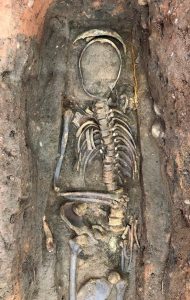
Anatomical dissection of adult male individual with circumferential craniotomy, removal of left arm and left pelvis, and displacement of left leg © HS2, courtesy of MOLA Headland Infrastructure

Anatomical dissection of adult female with circumferential craniotomy, sawn femora and removal of pelvis and right arm. The pelvis and proximal femora have been replaced with sand and bricks, possibly to add weight to the coffin, giving the impression that an intact body was contained within. © HS2, courtesy of MOLA Headland Infrastructure
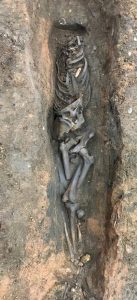
Anatomical dissection of adult male individual with displaced skull and circumferential craniotomy, removal of arms, displaced pelvis and sawn femora© HS2, courtesy of MOLA Headland Infrastructure
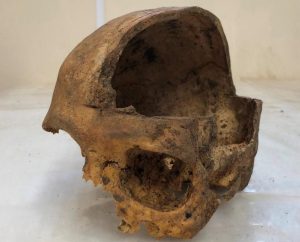
Bisection of adult male cranium from a charnel deposit of dissected remains © HS2, courtesy of MOLA Headland Infrastructure
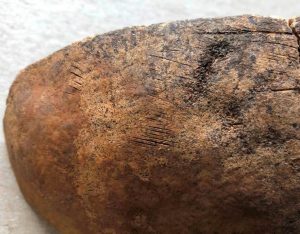
Knife or scalpel cut marks on dissected adult male cranium from a charnel deposit of dissected remains © HS2, courtesy of MOLA Headland Infrastructure
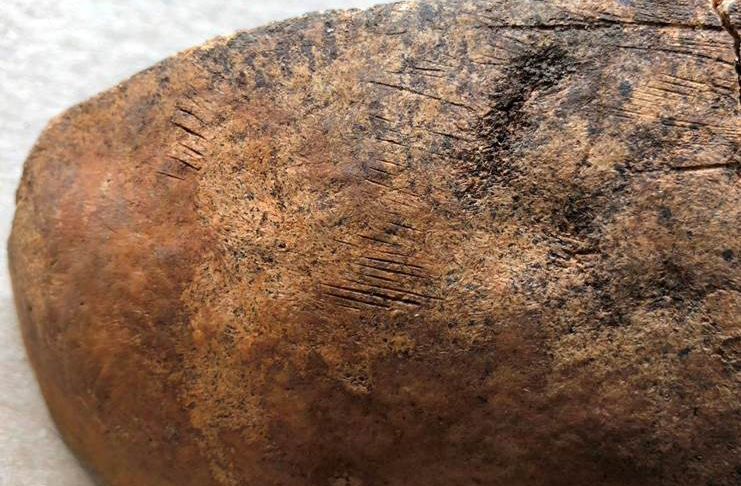
0 Comments
Leave A Comment